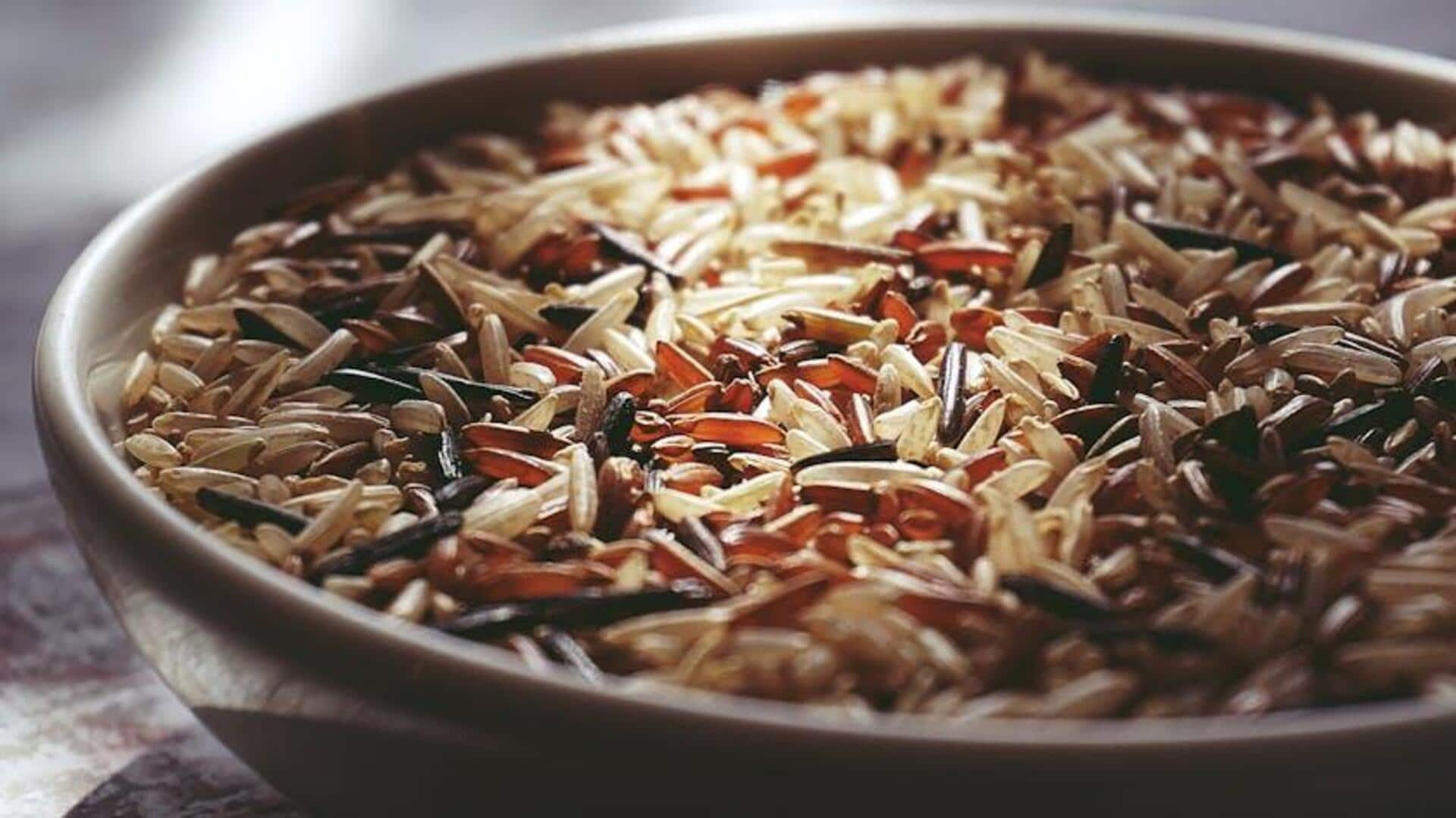
Powerhouse grains your kitchen should have
What's the story
Incorporating a range of grains into your vegetarian cooking can take your meals' nutritional value and taste to the next level. Grains are a key part of most diets, supplying important nutrients like fiber, protein, and vitamins. Here are five powerhouse grains that are especially helpful for everyday vegetarian cooking. These grains not only provide health benefits but also lend texture and flavor to your dishes.
Nutrient-rich
Quinoa: The complete protein
Often touted as a superfood, quinoa is packed with protein and contains all the essential amino acids. It is gluten-free and loaded with fiber, magnesium, iron, and antioxidants. Quinoa can be easily incorporated into salads, soups, or served on the side. Its nutty taste goes well with most ingredients and it is a favorite among vegetarians who want to up their protein intake without relying on animal products.
Whole grain goodness
Brown rice: A fiber powerhouse
Brown rice retains its bran layer, making it fiber-rich than white rice. This whole grain is low in fat and provides essential nutrients like manganese and selenium. Brown rice's chewy texture makes it ideal for stir-fries or pilafs. Its mild flavor complements vegetables and legumes perfectly, providing a satisfying base for many vegetarian dishes.
Ancient grain
Millet: Versatile grain option
Millet, an ancient grain, is a versatile ingredient used in different cuisines around the world. It is gluten-free and loaded with B vitamins, such as niacin and folate. Millet can be prepared as porridge or used instead of couscous or pasta in salads. The mildly sweet flavor of millet enhances the taste when paired with spices or herbs used in vegetarian recipes.
Cholesterol-lowering benefits
Barley: Heart-healthy choice
Barley is a star because of its high beta-glucan content—a soluble fiber known to lower cholesterol levels effectively by as much as 10%. The grain is also rich in vitamins B1 (thiamine) and B3 (niacin), and minerals like selenium, making it great for health-boosting efforts in plant-based diets as well. Barley's chewy texture is ideal for adding into stews and soups, where they soak flavors beautifully over time during cooking processes involved therein too.
Nutrient-dense seed
Buckwheat: Gluten-free alternative
Despite its misleading name, buckwheat has nothing to do with wheat and is actually a pseudocereal. This means it's a seed used the same way as grains. It's gluten-free and packed with nutrients like fiber and protein, making an excellent option for vegetarian diets. You can incorporate buckwheat in a range of dishes, from porridge to salads. It provides a nutty flavor to many ingredients.